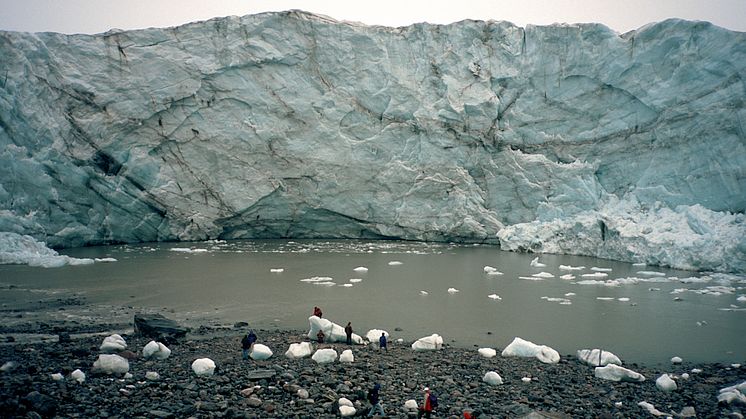
Press release -
Researchers awarded funding to investigate critical climate tipping points in Antarctica
The UK Centre for Polar Observation and Modelling (CPOM), based at Northumbria University, has been awarded over £400,000 by the European Space Agency (ESA) to investigate tipping points in the Earth’s icy regions, known as the cryosphere, with a focus on the Antarctic.
Climate tipping points are critical thresholds that if crossed, can lead to rapid and irreversible changes in the climate system with dramatic consequences for our society. Crossing these points in the cryosphere has the potential to lead to much faster sea level rise as well as trigger other tipping points in the climate system. Understanding where and when these tipping points might be crossed is of vital importance so that scientists can share the knowledge to help governments better prepare for the consequences of climate warming.
Dr Inès Otosaka from Northumbria’s Department of Geography and Environmental Sciences and Co-Director of Science for CPOM, will be leading the CryoTipping project. The research will involve a team of Earth observation experts from the ESA’s Antarctic CCI+ Project and ice sheet modelling specialists from Northumbria’s world-leading research group on cold and palaeo environments and the future of ice on Earth.
The project will build on datasets developed by the ESA’s Antarctic CCI+ Project, and will combine Earth observation and numerical modelling to detect marine ice sheet instability in the Amundsen Sea sector of western Antarctica, with a focus on Thwaites Glacier.
Dr Otosaka said: “Satellite observations have shown that the ice sheets have been melting more rapidly than previously thought whilst numerical models have demonstrated their sensitivity to future changes in their surrounding atmosphere and ocean. By combining state-of-the-art satellite observations and numerical modelling techniques, this exciting project will further our understanding of the trigger of instability mechanisms in Antarctica."
Exploring the potential of using satellite data to detect early warning signs of marine ice sheet instability, the CryoTipping project will be the first to contrast present-day retreat rates of the Thwaites Glacier measured from satellite data against those modelled over the past 20,000 years.
Dr Anna Maria Trofaier, Cryosphere Scientist at the ESA, said: “That Thwaites Glacier is extremely vulnerable to climate change is known. The worry is that ongoing changes could result in a switch to a new state of the West Antarctic Ice Sheet with crucial consequences for sea level rise. If we want to understand the state of this tipping element we need to combine models with observations, and the European Space Agency’s satellite Earth observation data are ideally placed to support this new project and its important work.”
The team aims to develop a new method to detect these tipping points by feeding satellite observations of grounding line location – where glaciers and ice shelves start to float – as well as ice velocity, and surface elevation changes to an ice sheet model, investigating the onset and potential irreversibility of the retreat of Thwaites Glacier over the coming centuries.
The project, funded by ESA and due to commence in early 2025, is led by CPOM in partnership with Northumbria University’s ice research community, Potsdam Institute for Climate Impact Research (PIK) and Max Planck Institute of Geoanthropology (MPI-GEA), and Earth observation experts from ENVEO IT GmbH and DLR German Aerospace Center.
CPOM is a partnership of six universities and the British Antarctic Survey (BAS), based at Northumbria University, primarily funded by the National Environment Research Council (NERC) to provide national capability in observation and modelling of the processes that occur in the Polar regions of the Earth. CPOM uses satellite observations to monitor change in the Polar regions and numerical models to better predict how their ice and oceans might evolve in the future. By providing long-term capabilities to the scientific community and leading international assessments, CPOM helps global policymakers plan for the effects of climate change and sea level rise.
Topics
Categories
UNIVERSITY OF THE YEAR 2022 (Times Higher Education Awards)
Northumbria is a research-intensive university that unlocks potential for all, changing lives regionally, nationally and internationally.
Two thirds of Northumbria's undergraduate students come from the North East region and go into employment in the region when they graduate, demonstrating Northumbria's significant contribution to social mobility and levelling up in the North East of England.
Find out more about us at www.northumbria.ac.uk
--- Please contact media.communications@northumbria.ac.uk with any media enquiries or interview requests ---











